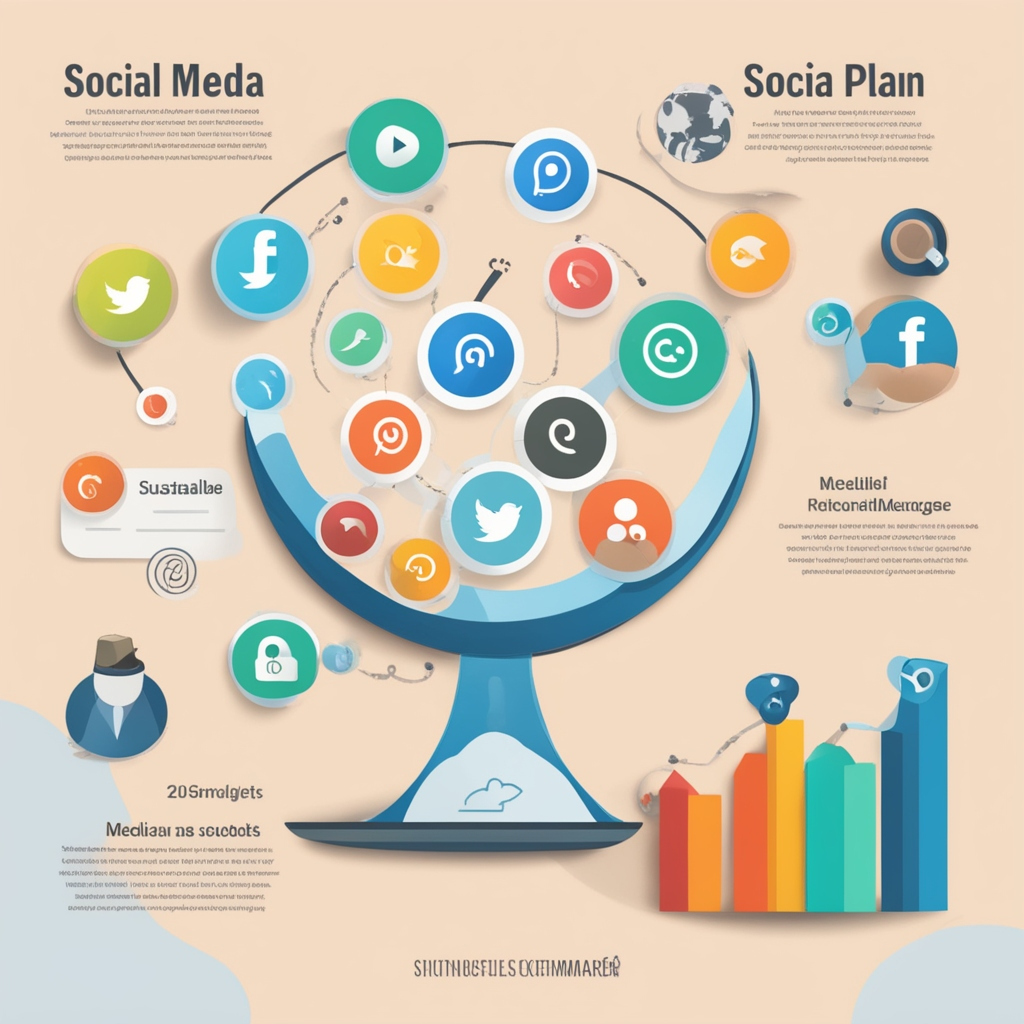Social media marketing has become an essential tool for businesses, influencers, and organizations aiming to build brand awareness, drive engagement, and generate sales. However, many marketers struggle with consistency, burnout, and diminishing returns due to unsustainable strategies. A sustainable social media marketing plan ensures that your efforts remain effective over time without exhausting resources or overwhelming your team.
This article will guide you through creating a long-term, scalable social media strategy that maximizes impact while maintaining balance and efficiency.
1. Define Clear Goals and Objectives
A sustainable strategy begins with well-defined goals. Setting SMART goals (Specific, Measurable, Achievable, Relevant, and Time-bound) ensures you have a clear direction. Examples include:
- Increase brand awareness by growing your Instagram following by 20% in six months.
- Boost engagement by increasing comments and shares by 30% within a quarter.
- Drive website traffic by achieving 10% of total site visits from social media referrals.
Ensure your objectives align with your broader business or personal brand strategy.
2. Identify and Understand Your Target Audience
Understanding your audience is crucial for sustained success. Conduct market research to define key demographics, interests, and behaviors. Use tools like:
- Google Analytics – To track social media-driven traffic.
- Facebook Audience Insights – For audience demographics and interests.
- Surveys and Polls – To gain direct feedback from your followers.
Knowing your audience allows you to create content that resonates, leading to higher engagement and long-term loyalty.
3. Choose the Right Platforms
Not all platforms are suitable for every brand. Focus on channels where your audience is most active. Popular platforms include:
- Instagram & TikTok – Best for visual content and younger audiences.
- Facebook & LinkedIn – Great for community building and B2B marketing.
- Twitter/X – Ideal for real-time conversations and news sharing.
- Pinterest – Excellent for brands in fashion, DIY, and lifestyle niches.
Rather than spreading yourself too thin, prioritize 2-3 platforms and maintain consistent quality.
4. Develop a Content Strategy
A sustainable content plan includes a mix of different content types to keep your audience engaged without overwhelming your creative resources. Consider:
- Evergreen Content – Timeless topics that stay relevant (e.g., how-to guides, FAQs).
- Trending Content – Topics that capitalize on viral trends and current events.
- User-Generated Content (UGC) – Encouraging your audience to create content about your brand.
- Behind-the-Scenes Content – Humanizing your brand by showcasing your processes and team.
A balanced mix ensures your content stays fresh while reducing the pressure of constant creation.
5. Create a Content Calendar
A content calendar helps maintain consistency while avoiding last-minute stress. Use tools like:
- Trello or Asana – For organizing content ideas.
- Google Sheets or Airtable – To track content schedules.
- Hootsuite or Buffer – For scheduling posts in advance.
Plan content at least one month ahead and leave space for flexibility to adapt to trends.
6. Engage With Your Audience Consistently
Engagement is key to social media success. A sustainable approach involves:
- Responding to comments and messages within a reasonable timeframe.
- Participating in relevant conversations and industry hashtags.
- Hosting live Q&A sessions or polls to increase interaction.
- Encouraging and acknowledging user contributions.
This fosters community growth without requiring constant online presence.
7. Leverage Automation and Tools
To maintain efficiency, automate repetitive tasks without losing authenticity. Useful tools include:
- Canva – For quick content creation.
- Later – For scheduling visual content on Instagram and Pinterest.
- Chatbots (like ManyChat) – To manage customer inquiries on Facebook and Instagram.
While automation helps, always add a human touch where needed.
8. Analyze and Optimize Performance
A sustainable plan requires ongoing assessment and adjustments. Key metrics to track include:
- Engagement Rate – Likes, comments, shares, and interactions.
- Reach and Impressions – How many people see your content.
- Conversion Rate – How well social media drives desired actions.
- Follower Growth Rate – The pace at which your audience expands.
Regularly reviewing analytics (weekly or monthly) helps refine strategies for better results.
9. Avoid Burnout: Balance and Team Collaboration
If social media management becomes overwhelming, consider:
- Batch content creation – Dedicate a few hours weekly to produce and schedule content.
- Outsourcing tasks – Delegate design, copywriting, or community management if necessary.
- Setting clear work boundaries – Limit social media use outside work hours.
Maintaining a balance prevents fatigue and ensures long-term sustainability.
10. Adapt to Changes and Stay Updated
Social media is constantly evolving. Stay informed by:
- Following industry blogs (e.g., Social Media Examiner, HubSpot, Sprout Social).
- Experimenting with new features (e.g., Instagram Reels, LinkedIn Newsletters).
- Learning from competitors and adapting successful tactics.
Being adaptable ensures your strategy remains effective despite platform algorithm updates.
Creating a sustainable social media marketing plan involves setting clear goals, understanding your audience, choosing the right platforms, and maintaining an effective content strategy. By leveraging automation, engaging consistently, tracking analytics, and avoiding burnout, you can achieve long-term success without exhausting your resources.
A well-planned and sustainable approach not only enhances brand presence but also ensures meaningful, long-term relationships with your audience. Start small, stay consistent, and evolve as needed to keep your strategy fresh and impactful.




